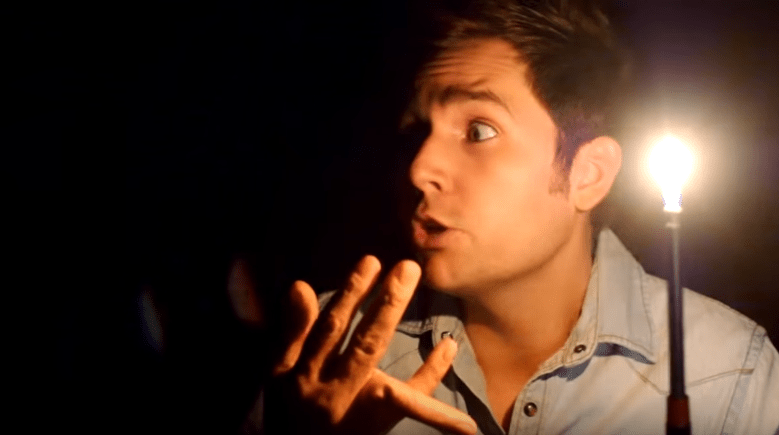Being a Good Samaritan often happens as a result of being in the right place at the right time, not necessarily looking to step up and doing something to help out someone else. But the moment when you actually can be of service to someone in need is a great feeling. We’ve had two recent incidents of our staff members unexpectedly serving as Good Samaritans. Here are our stories:
That Definitely Doesn’t Look Right
— By Dr. Bill Booker
I have had the good pleasure and privilege to work with elite athletes from around the area in a variety of sports. One of the things I enjoy most is getting the opportunity to watch one of our young athletes perform for their school or travel program. Knowing that we may have played a small part in their success is extremely fulfilling.
One day a couple of weeks ago, I was watching a high school basketball game between two very elite programs when five minutes into the game, one of the players I work with dislocated, dislocated his finger. The dislocation was so obvious that the fans in attendance could clearly see the finger pointing “east” when a finger is only supposed to point due north.
The player immediately ran off the floor, and was met by the school’s medical team. The concerned parents came from the stands, clearly upset by what had happened to their son. The group was joined by the head of the school, who was in attendance, and suddenly there was s mall mob around the player as the medical team struggled with what to do.
Then, to my surprise, the head coach of the team, points to me, sitting in the back row of the stands and waves me down to help the kid. Initially I was a little taken back, as I was just a fan at a basketball game, but I quickly realized if there was anything I could do to help, I would.
It was clear that the training staff wanted to send the player to the hospital, but the parents wanted to see if something could be done right there and on site. The medical staff told the parents it was their decision, the parents then looked at me, and I told them, if they asked me to help, I could help as one of those Good Samaritans we hear about, but reiterated, that I’m not a member nor an employee of the school or the medical staff.
So with a small crowd of people leaning in to watch, I smoothly re-set the kid’s finger, he didn’t even realize I had done it, the medical staff taped him up, he went back in the game, and his team went on to win in thrilling fashion.
Nothing like quickly building my urban legend credentials at a D.C. area high
(Bonus for the goofballs among us, you can watch the Jesse and Mike YouTube video sketch to learn how NOT to treat a dislocated finger).
The Knee-Jerk Reflex to Emergency Preparedness
— By Gina Hahn, DPT
In November I was on a flight from Atlanta back to DC. sitting in the sixth row window seat. We were in the air for about 20 minutes or so, at the altitude where you can turn on your electronic devices, when I saw the flight crew administering oxygen to a person near the front of the plane.
Next thing I knew, the crew came over the loudspeaker and asked if there were any medical personnel on the flight. I took a quick look around the plane to see if anyone else was identifying themselves, realizing there wasn’t a lot of time to deliberate, I pressed the call button to alert the flight attendants.
A flight attendant quickly took me to the man in distress in the front row. I introduced myself as a physical therapist, not a medical doctor. (I remember hoping there were medical doctors or EMTs on the plane, but no, I was the only one in the medical profession.)
The mood among the flight attendants was slightly panicked, but they were following protocol and communicating with medical staff on the ground. I knelt down in front of the gentleman, who looked to be in his late 60s, and his daughter, who was probably in her late 20s. I introduced myself and told them I was here to help. My approach was to be calm and clear, to help minimize the stress as best I could.
It was clear that the gentlemen was having difficulty breathing. I took his vitals and asked questions about his medical history, and discovered he had a pulmonary embolism (PE) one month prior, and received routine kidney dialysis every three-four days. His daughter helped to answer the questions, and informed me that his last dialysis treatment was three days prior.
His pulse was thready (weak and fluttering). I was unable to take his blood pressure because sitting upright created more distress, so I had him stay in a “braced position,” leaning forward with elbows on his knees.
While this was going on, we intermittently gave him oxygen, he was not tolerant of the oxygen mask because he felt suffocated or claustrophobic with it on. He was frothy at the mouth and was spitting up so occasionally I would take the mask off and hold tissues in front of his mouth so he could spit.
(I should note, all of this happened within about eight minutes.)
The staff asked me if I would administer Albuterol (a suggestion from the medical staff on the ground), which is a vasodilator, but based on my working theory, his airway was blocked because of fluid, not constriction of the airways, so I told them we should not use the Albuterol.
Another minute goes by, and the staff asked me, “Do we need to land the plane?” to which I immediately said yes. The crew announced to the rest of the passengers that we would make an emergency landing in Charlotte within the next 30 minutes.
I buckled up next to the man and held tissues for his coughing and spit up, while his daughter held the oxygen mask to his nose and mouth. When we landed safely, medical staff was at the door to meet the man and his daughter. I reported my findings about his recent PE and likely need for dialysis treatment as they escorted him off the plane in a wheelchair.
The daughter, who kept her cool throughout this situation, hugged me and finally let out some tears as she walked away.
Afterward, I felt a huge rush of emotions and questions. Did I do everything in my power to help this person? How much longer would he need to “hold on” until he received the treatment he needed? Would he survive? Unfortunately, I did not have any contact with the family after this event, but I am hopeful that he is in good hands.
Reflecting back, I am grateful to my education and emergency preparedness training which kicked in like a knee-jerk reaction, and carried all of us through until we landed safely.
Do you have a story of being in the right place at the right time? Share it in the comments.










